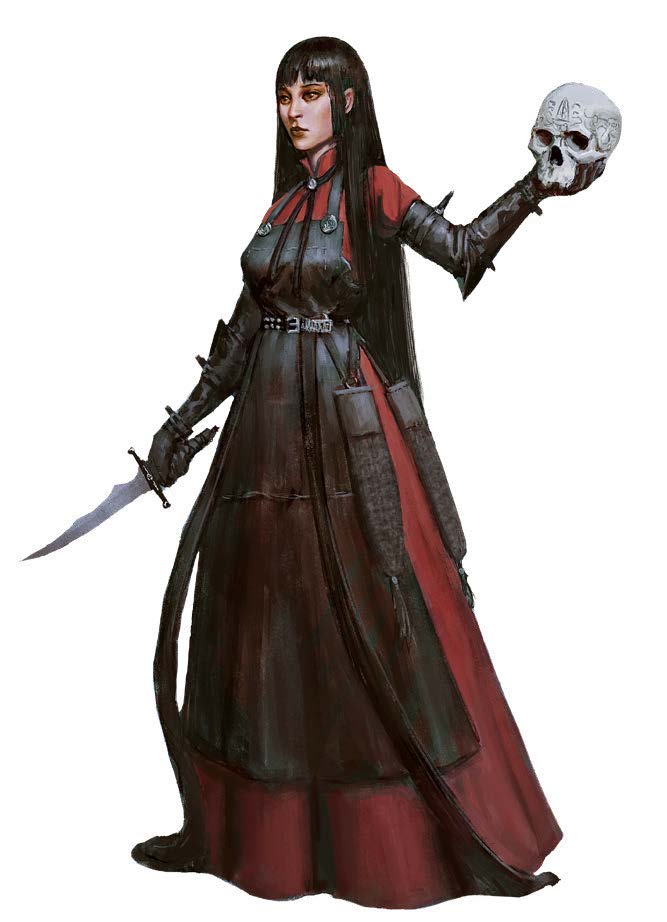
Having covered all the individual mechanisms in skirmish-based encounter building, we now need to put them all together to create a cohesive process for encounter design. Fortunately, 5th Edition’s guidance on creating combat encounters provides the tools we need, so we just need to tweak them a little.
We’re going to be focusing on two tools. The first is to forcibly shove things along the encounter difficulty chart, moving encounters across the easy to deadly spectrum based on the skirmish’s difficulty and regardless of the nominal XP budget. The second is to manipulate the encounter multiplier for having many foes.
While manipulating the encounter difficulty chart is a simple way to indicate how factors affect combat difficulty, it’s also imprecise, doesn’t have many gradations, and can be misleading. It still has its uses in adjusting the broad overview of an encounter but is less useful for dealing with more granular modifications, like how NPC roles or terrain may adjust the difficulty of a fight.
The encounter multiplier for multiple foes is a better tool for these more granular modifications. It allows you to deal with more incremental adjustments to encounter difficulty at the cost of having to perform multiplication. However, it can also be misleading with very low or very high numbers of enemies or with very large parties.
Both of these tools are imprecise. XP budgets are an estimation of lethality and resource expenditure at the best of times, and by introducing more factors that are difficult to quantify, they become further distorted. A deadly encounter may instead represent a high chance of a failed objective or that one character won’t be able to use their best tools rather than a significant chance of death. Similarly, an easy encounter may indicate that a brutal fight will simply be mercifully short rather than unlikely to injure or kill a character.
So let’s modify this process for skirmishing:
- Determine XP threshold and record party capabilities.
- Determine objective(s) and terminus, noting threshold adjustment.
- Determine terrain and adjust encounter multiplier.
- Determine opposition, assign roles, and adjust encounter multiplier.
- Tally total experience and apply multiplier and threshold adjustments.
- Adjust for desired difficulty.
The first step is to determine the XP threshold, as already recommended, but you should note the strengths, weaknesses, and capabilities of individual characters and the party as a whole for use later. Everything that follows is based on the capabilities of your specific party rather than a theoretical equivalent party at their level, so it’s important to have a handle on what they can do.
The second step is to determine the stakes, or objectives, and (if separate from the objectives) the terminus of the encounter. Using the guidelines from previous posts, determine if any of these represent a significant increase or decrease in difficulty compared to a standard combat. If so, once you’ve determined what threshold the encounter falls under, adjust it by one column as appropriate (toward deadly for difficult objectives and toward easy for trivial ones). This means that objectives that are easy for your party to complete probably shouldn’t have an easy encounter difficulty before adjustment, and objectives that are particularly difficult should rarely have a deadly difficulty before the adjustment.
For our third step, determine the terrain for the encounter. You don’t need to fully create the map, but you’ll want to outline any effects that cover the whole map, anything that affects the objective, and to have a rough idea of what the map will encourage and discourage. If the resulting terrain makes it harder for at least one member of the party to perform their role in combat or makes it harder to achieve the objectives, increase the encounter multiplier by 0.5. If both are true, increase it by 1. If the terrain makes it harder for the opposition to perform their roles in combat or makes it easier to achieve the objectives, reduce the encounter multiplier instead. Particularly dramatic terrain pieces may be worth larger increases: for example, an actively hostile volcano that is more dangerous than any of the enemies on the field, but these are going to be exceptions that don’t mechanize cleanly and will need to be approached on a case-by-case basis.
Fourth, select the opposition for the encounter and determine their roles. The preexisting guidelines work well for this, and if you have a multi-part encounter (mentioned in the terminus post), the advice provided in the game works well for determining its encounter budget.
Try to make sure to have at least one obstacle and one other role represented. If the monsters chosen are uniquely threatening to the party, represent a wide array of the encounter roles, or have features which make objective completion far more difficult, then increase the encounter multiplier by 0.5. If on the other hand they are uniquely weak to the party or will have difficulty contesting the encounter’s objectives, reduce it instead. (In many cases, those in the role of filling don’t meaningfully contribute to the difficulty of an encounter, so you may not want to include them in the number of monsters when determining your encounter multiplier.) Additionally, monsters tailored to the party are generally also ones that have features making objective completion more difficult (and vice versa), so the change in encounter multiplier for opposition shouldn’t be applied more than once.
Finally, tally the experience points of everything in the encounter, apply the encounter multiplier, and adjust the difficulty threshold it falls under, as appropriate. If the resulting encounter difficulty isn’t what you’re aiming for, adjust elements of the encounter until it falls where you want it.
This is all theoretical of course. So for our final article in the series, we’ll be putting this into practice.
